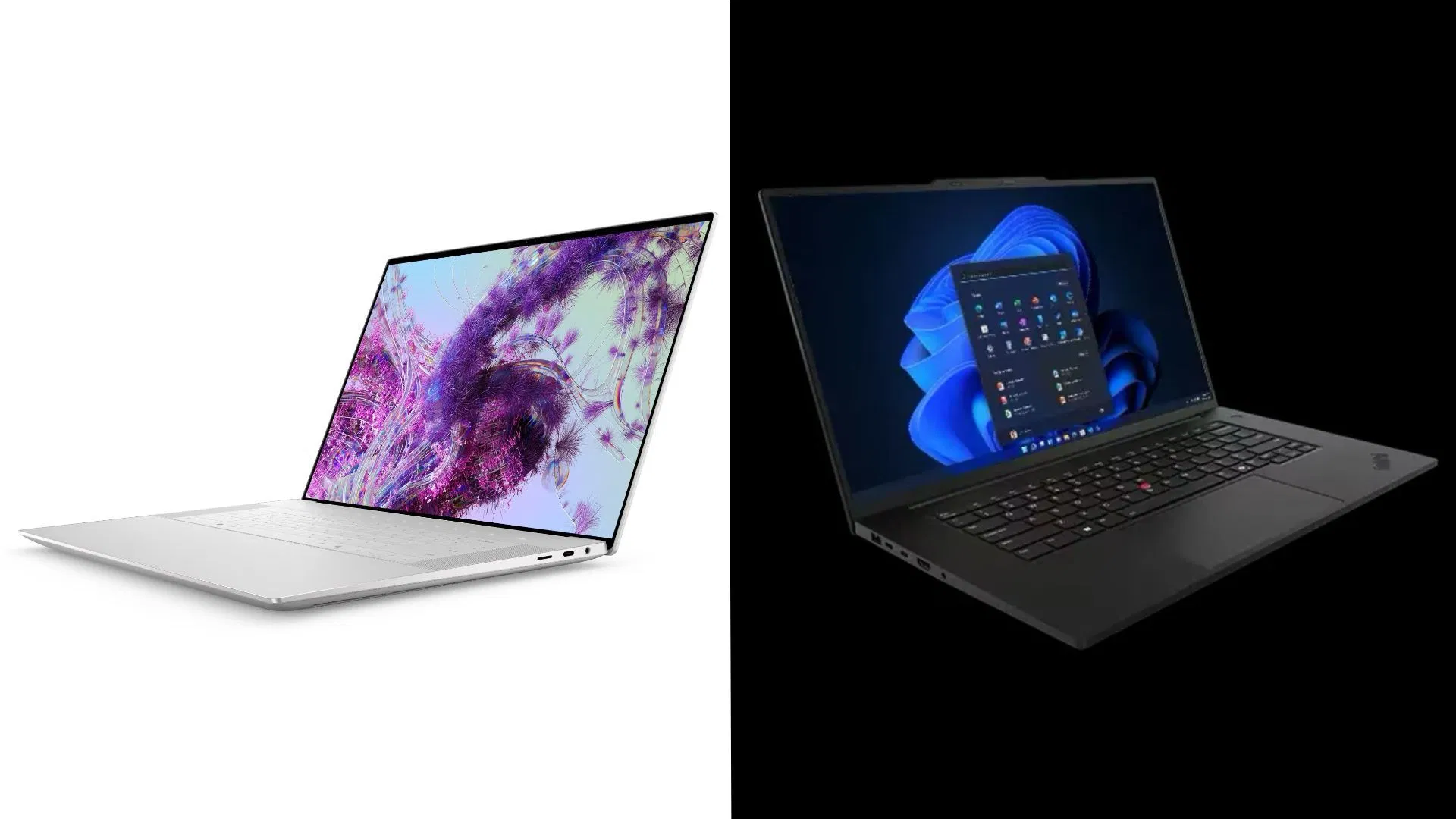Copyright sportskeeda

If you are looking for premium professional laptops, both the Dell XPS 16 and Lenovo ThinkPad P1 Gen 7 stand out for their performance, build quality, and design. The XPS 16 is Dell’s flagship ultrabook, which is built for creative professionals who want desktop-like power but in a portable form. Meanwhile, the ThinkPad P1 Gen 7 is from Lenovo’s workstation lineup that focuses on reliability, security, and performance. Let’s compare both devices in depth to find out which is the better laptop.Dell XPS 16 vs Lenovo ThinkPad P1 Gen 7: SpecificationBoth laptops are packed with powerful hardware. The Dell XPS 16 takes the edge in display quality and raw GPU power, while the ThinkPad P1 Gen 7 focuses on reliability, portability, and battery efficiency.FeaturesDell XPS 16Lenovo ThinkPad P1 Gen 7ProcessorIntel Core Ultra 9 185H (16 cores, up to 5.1 GHz)Intel Core Ultra 7 155H (16 cores, up to 4.8 GHz)RAM32GB LPDDR5 (up to 64GB)16GB LPDDR5x (expandable up to 64GB)Display16.3-inch OLED, 3840 x 240016-inch IPS, 1920 x 1200, 100% sRGBGPUNVIDIA GeForce RTX 4060 (8GB GDDR6)NVIDIA RTX 1000 Ada (6GB GDDR6)Storage1TB M.2 NVMe SSD512GB PCIe Gen4 SSDBattery99.5Wh Li-ion90Wh Li-ion (Rapid Charge)Weight~2.1kg~1.8kgPrice₹3,59,000₹2,51,000Dell XPS 16 vs Lenovo ThinkPad P1 Gen 7: PerformanceThinkPad P1 Gen 7 used for running specific software. (Image via Lenovo)The Dell XPS 16 takes the lead in terms of performance thanks to its Intel Core Ultra 9 185H, which is paired with an NVIDIA GeForce RTX 4060 and 32GB RAM. This combination gives it a clear advantage in tasks like 3D rendering, video editing, and machine learning. The RTX 4060 also supports higher CUDA core counts and more raw graphical horsepower, making it better for creative workloads and some after-work gaming.On the other hand, Lenovo ThinkPad P1 Gen 7 features Intel Core Ultra 7 155H and NVIDIA RTX 1000 Ada GPU, which deliver solid performance for professional work like CAD, 3D modeling, and software development. The ThinkPad’s GPU is workstation-certified, which means it works better with specialized apps like AutoCAD, SolidWorks, and Revit. However, it lags behind the XPS 16 when it comes to raw GPU output and graphical rendering speeds.So, the Dell XPS 16 is better suited for creative users who need power for graphics-heavy workloads, while the ThinkPad P1 Gen 7 is ideal for engineers or business professionals who need stability and certified hardware for specific software.Dell XPS 16 vs Lenovo ThinkPad P1 Gen 7: DisplayDell XPS 16 features a 16.3-inch OLED display. (Image via Dell)The Dell XPS 16 wins in the display section with a 16.3-inch OLED panel with a 3840 x 2400 resolution, producing deep blacks, vibrant colors, and excellent contrast. For photo and video editors, the OLED display makes color grading and detailed visual work much more accurate. The nearly bezel-less InfinityEdge design also enhances the immersive viewing experience.The Lenovo ThinkPad P1 Gen 7 features a 16-inch WUXGA IPS panel with 1920 x 1200 resolution, 100% sRGB coverage, and 400 nits brightness. While the display is color-accurate and great for everyday professional use, it lacks the visual punch and resolution of the XPS 16’s OLED. However, it has anti-glare and doesn't strain eyes during long working hours.If visual fidelity and resolution matter most, the Dell XPS 16 is the clear choice. But for those who prioritize practicality and longer screen time, the ThinkPad P1 Gen 7 is made for them.Dell XPS 16 vs Lenovo ThinkPad P1 Gen 7: BatteryThinkPad P1 Gen 7 features 90Wh Li-ion battery. (Image via Lenovo)The Dell XPS 16 has a 99.5Wh lithium-ion battery, which supports the demanding OLED panel and high-end GPU. However, due to the power-hungry components, it typically offers around 6–8 hours of use.Although the Lenovo ThinkPad P1 Gen 7 packs a slightly smaller 90Wh battery, it’s more efficient due to its less power-consuming components. You can expect 8–10 hours of typical use, depending on workload. Moreover, it has Rapid Charge, charging the device in less time compared to the XPS 16.If endurance and quick charging matter for you the most, Lenovo takes the edge here. But if you need raw power and don’t mind carrying the charger with you, the Dell XPS 16 remains the ideal choice.Dell XPS 16 vs Lenovo ThinkPad P1 Gen 7: PricePrice plays a major role in this comparison. The Dell XPS 16 starts at around ₹3,59,000, reflecting its premium build, OLED display, and high-end RTX 4060 GPU. On the other hand, the Lenovo ThinkPad P1 Gen 7 is priced at ₹2,51,000, making it significantly more affordable.In terms of price-to-performance ratio, Lenovo offers better value, while Dell delivers a more premium experience.Which laptop should you pick?The Dell XPS 16 is the better choice for creators and designers who need the best possible display and GPU performance. However, the Lenovo ThinkPad P1 Gen 7 is more balanced, lighter, and affordable. It’s perfect for engineers, business users, and users who prefer durability and certified workstation performance.



